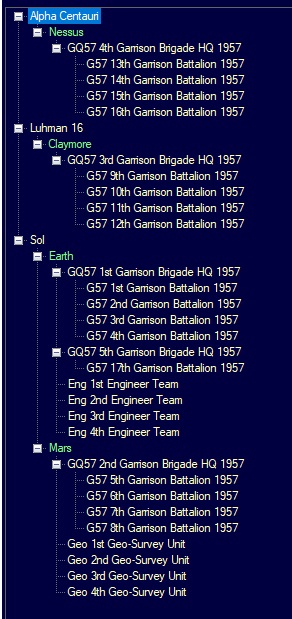Once we have Grinders for all sites in alpha centauri might we then not just start putting them in thise kther systems too? Like is there a catch to mining as much as possible as fast as possible? - See below
So if its been a Snargate they could use it without beinfallies? - Yes Star gates don't have friends or enemies. They are neutral to all.
That jump sling, can that jump freighters and other non diplo ships top? - No. I deliberately restricted its size so that it is useless except for diplomacy. It built faster that way.
Mining as much as possible as fast as possible does NOT equal putting Grinders on all mineral sites. And it also doesn't sound like our best option.
First off:
The number of Grinders that we get per year depends on a few factors such as the number of shipyards and slipways we devote to the task, our tech level (there is a repeating tech that increases shipyard through-put), the skills of the governor of the planet at which the shipyards are located, the cost of the Grinders in BP's... not sure if any other factors are involved.
But assuming that we hold the number of Grinders constant across the span of our Gedankenexperiment:
Where to put the Grinders is not a simple question, and it has no single best answer.
Each Grinder represents (or contains) 21 robot mines. That is not a large number. It is a SMALL number.
The amount of refined ore produced by a single mine of any type
IN A YEAR is 10 * TechModifier * Purity. Calculated seperately for each mineral present.
,,, so if a single Grinder (representing 21 mines) at starting tech level were working a comet that had Duranium at 80%, Sorium at 70% and Corundium at 100%, then it would collect about 520 minerals PER YEAR, or less than 50 minerals per month.
And that's with three minerals present! One of our best sources of Corundium (required for building more mines and Grinders) has ONLY that one mineral. So at 100% purity, that mine (at starting tech level) offers a single Grinder only 210 mineral per year. Less than 20 per month. We USE thousands of minerals per month.
Obviously if we want to maximize through-put, we need to STACK Grinders in order to achieve anything. A couple of dozen of them would not be excessive.
But where? On the mineral deposits that have the largest variety of minerals? That maximizes the raw numbers of minerals that we get per month... but are they the minerals we NEED? A few examples:
Duranium is needed for lots of things, including spaceships, shipyards, and several types of buildings...
Neutronium is used for spaceship armor, for ground troops and ground troop training facilities...
Mercassium is used for research labs, spaceship life-support...
Sorium is the only source of rocket fuel, and is used for spaceship engines...
Corundium is used to make mines of all sorts, including Grinders...
Boronide is used to make financial centers and terraformers...
Gallicite is needed for missile warheads...
... and others.
But we don't need all these things in similar quantities. Our #1 need at the moment (until we met the Galapa-Goons, anyway) is Corundium so that we can continue expanding our resource base and continue snowballing. But we need all the other stuff, too. And bear in mind that ship maintenance and ground troop maintenance is paid in both money and minerals. So (just one example) you must pay Neutronium maintenance on all of your space-ships every five days, because of the armor.
So the question of where to put the Grinders and how many to stack at each location CANNOT be answered just by adding numbers together. It requires prioritizing different demands. and right now, Corundium is very much in demand.









